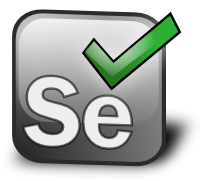 This workshop is designed as an introduction to the popular Selenium family of test automation tools. This course will cover some aspects of Java coding and the sample code under test, but the main objective is to gain a good working knowledge of Selenium for functional test automation.
This workshop is designed as an introduction to the popular Selenium family of test automation tools. This course will cover some aspects of Java coding and the sample code under test, but the main objective is to gain a good working knowledge of Selenium for functional test automation.
You will learn the major building blocks of Selenium, along with how to use tools such as Firebug, Firepath, and the Java Development Kit (JDK) in the process of creating automated tests.
Each step of learning will contain a hands-on lab where you will be able to go step-by-step through the process of creating and modifying automated tests.
In addition, you will learn good practice for designing automated tests so they are

maintainable and reusable in a test automation framework. You will also learn about how Selenium and Appium can integrate with testmanagement tools.
We introduce Appium and how to use it to test native Android apps.
Finally, once you understand how to use Selenium WebDriver and Appium at a basic level, we cover how to know what to automate and what is needed for successful test automation.
Contact Us to schedule an in-house or live virtual presentation!
Pre-requisites:
View e-Learning module “Introduction to Java” (1 hr.)
View e-Learning module “Overview of Selenium IDE” (1 hr.)
Module 1 – Introduction to Selenium WebDriver (1 hr. without set-up tasks) (Topics marked with * may be performed in advance of the class as part of the training environment set-up)
- A Brief Background
- Selenium 3 Architecture
- The Differences Between Selenium IDE and WebDriver
- What We Need
- How to Set Up Your Java environment*
- How to Install Eclipse IDE*
- Configure Eclipse IDE With WebDriver*
- Creating a Basic Test in WebDriver
- Working with Selenium Java Client Driver Files
- About the Drivers
- Creating Your First WebDriver Script
- Creating Test Cases
- Creating Test Suites
- Explanation of the Code
- Running the Test
- Debugging Tests
- Test Results
- Exercise
- Summary
Module 2 – Going Deeper With WebDriver (4 hrs.)
- About TestNG
- Installing TestNG to work with Selenium WebDriver*
- Finding Elements by:
- ID
- Name
- ClassName
- XPath
- Link list
- findElement()
- Exercise
- Testing AJAX
- Specifying Wait Times
- Advanced User Interactions
- Keyboard
- Mouse
- “Actions” class
- Exercise
- Working With Multiple Windows
- Performing Cross-Browser Testing
- Exercise
- Design Patterns
- Page Object Design
- PageFactory Selenium library
- Loadable Components Selenium library
- Using Private Methods to Make Tests Maintainable
- Exercise
- Adding Assertions
- Exercise – Recording a Test With Multiple Windows
Module 3 – Selenium Test Frameworks (2 hrs.)
- What is Framework?
- Why use a Framework?
- Types of Frameworks
- Data-driven
- Keyword
- Hybrid
- How to Implement Keyword-driven Automation in Selenium WebDriver
- How Selenium Integrates with Test Management Tools
- Exercise
Module 4 – Appium Basics (2 hrs.)
Note: This module requires the Android SDK, Appium, and an initial app to be installed. To test iOS apps, a Mac environment is needed.
- About Appium and How it Works
- Using the UI Automation Viewer
- Using Locators
- Using the Inspector
- Creating Basic Tests of an Android App
- What is needed to test iOS Apps
- How Appium Integrates with Test Management Tools
- Exercise - Creating Basic Tests of an Android App
Module 5 – Knowing What to Automate (1 hr.)
- Key criteria
- Real-life Examples
- Helpful Test Automation Metrics
- More Automation Criteria

